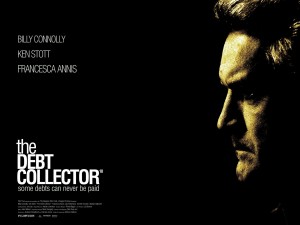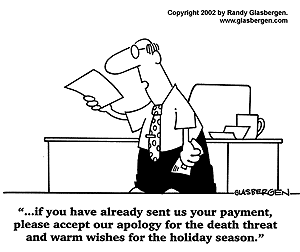The Rolling Jubilee is project of Strike Debt where we buy debts for pennies on the dollar. But instead of collecting on that debt like a debt collector would, we just abolish it. A common criticism of Rolling Jubilee is that we’re buying “bad” debts that would never have been collected anyway.
We assure you that this is not the case. Here’s why.
We are stepping in to the process at precisely the same point as other participants, the debt buyers and debt collectors. These are investors, who buy this debt precisely so that they can collect on it and make a profit. And they are succeeding. The New Economy Project looked at just 26 debt buyers in just New York City over a two year period and documented how they extracted $1.1 billion dollars of wealth from the poorest New Yorkers. Debt buying is a very lucrative industry.
If they’re valuable, why sell them?
If it’s possible to collect on these debts, why do the lenders sell them in the first place? It turns out that large lenders like banks and credit card companies are actually required by law to write off the value of all “non-performing” debts after a certain number of days, in order to keep the lenders from hiding large losses on their paper balance sheets. These laws were mainly implemented after the Savings and Loan crisis of the late 1980s, when bank books were bloated with badly accounted non-performing assets. The number of days at which a debt is considered “non-performing” vary by the type of debt and state, but can range from about 180 days to as little as 60 days!
When they write off the debts, the lenders get a tax deduction for the written-off value. Many lenders choose to then sell these written-off debts, in bulk, to debt buyers. Because they are already written off, and because they sell them in bulk, on a regular basis, the prices debt buyers pay are very low – often just pennies on the dollar.
[This is also why buying debt is not, as some have claimed, “helping” the banks and lenders. If the Rolling Jubilee could buy enough debt to drive up the market price of debt – and we can’t, because the market, at around $100 billion per year, is far, far larger than we will ever be – we would not be enticing banks to sell more debt than they already are, because they are forced to sell it by law. But even in that unthinkable scenario, the primary effect of driving up the price of debt would be to increase the cost of doing business for debt collectors – potentially putting some of them out of business! We think that would be a fantastic outcome.]
Sometimes, the banks selling the debt are providing financing to the debt buyers they are selling the debt to, so they end up making money off these collections, too!
Debt buying is extremely profitable
Debt buying has been considered a “growth industry” for much of the past decade precisely because these debts are highly collectable. Collectors will buy a large portfolio and then start “working” the debt for 2-5 months. They don’t need to collect on every single account in order to make a massive profit because they bought this debt at such a steep discount. And they don’t need to collect 100% of each account. One common practice is to offer to settle with debtors for 50% of the original principal. The debtors are tricked into thinking this is such a great deal, and even feel an extra obligation to pay because they think this is an act of generosity on the part of the debt collector. But if someone pays 50% of a debt’s face value when the investor purchased it for just 3%, the investor is still making a return on investment of 1,666%!
A debt buyer will generally have a particular profit margin that they are trying to hit and will keep working a portfolio until they hit it. At that point they will sell the remain accounts downstream. The next investor will wait a year or so and then try again.
Debt buyers make their most money off of people who are just getting back on their feet. The debt industry makes its most money by preying on people who are temporarily down on their luck, can’t pay their bills for a short period of time, and get loaded up with debt. Collectors tend to make their largest profits about a year or two after the debt was considered “non-performing”, when the debtor’s situation has improved. Most of the debts we buy fall in this most lucrative time window.
A bailout for those who need it most
Fundamentally, our project of abolishing this debt is keeping more money in the hands of debtors who need more money, and it is removing millions of dollars that would have ended up in the hands of investors and collectors. To be sure, the Rolling Jubilee is a drop in the bucket in terms of overall indebtedness, or even debt being traded in the secondary market, but for the people who are helped, our intervention can mean the difference between life or debt.
As we look beyond the Rolling Jubilee, we are developing tactics to help build collective forms of power that will allow us all to resist illegitimate debts. Throughout history, when debtors have banded together, they have won. We are building tools and organizing to help break our collective bonds. The Rolling Jubilee is a spark, not the solution. In the meantime, here are some ways you can keep the Jubilee rolling.


